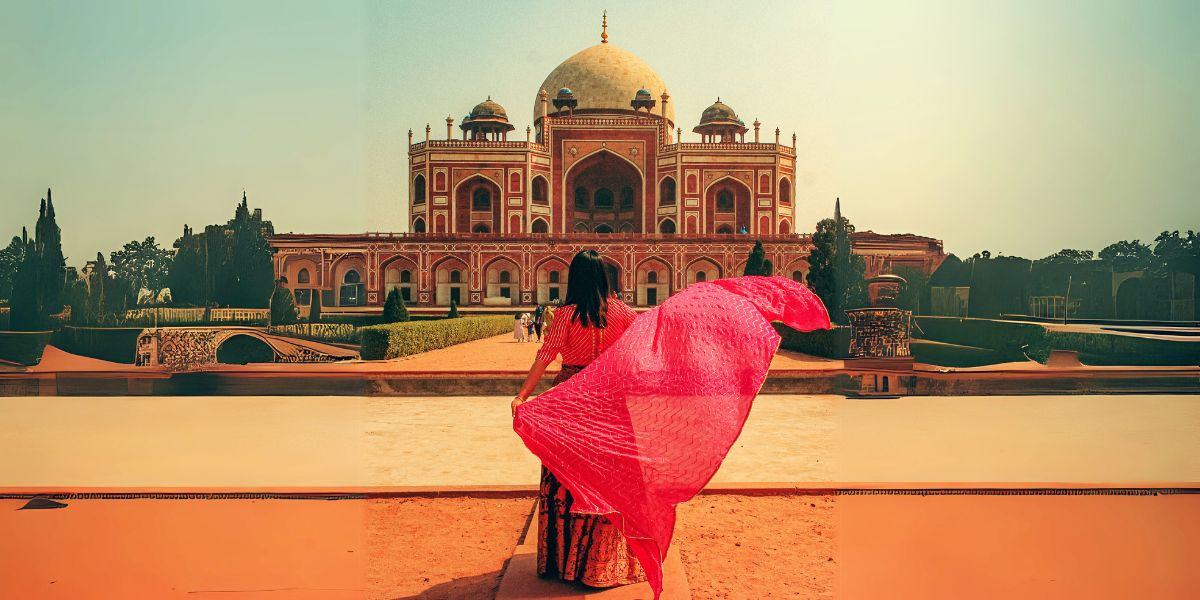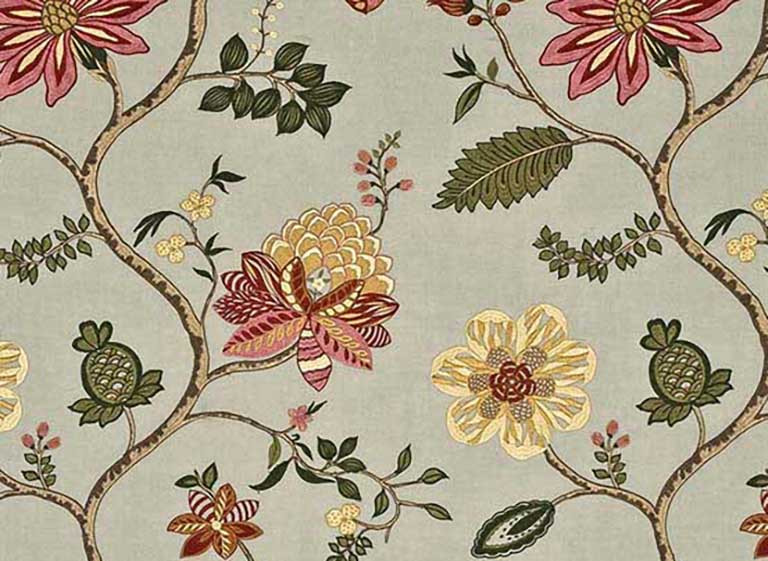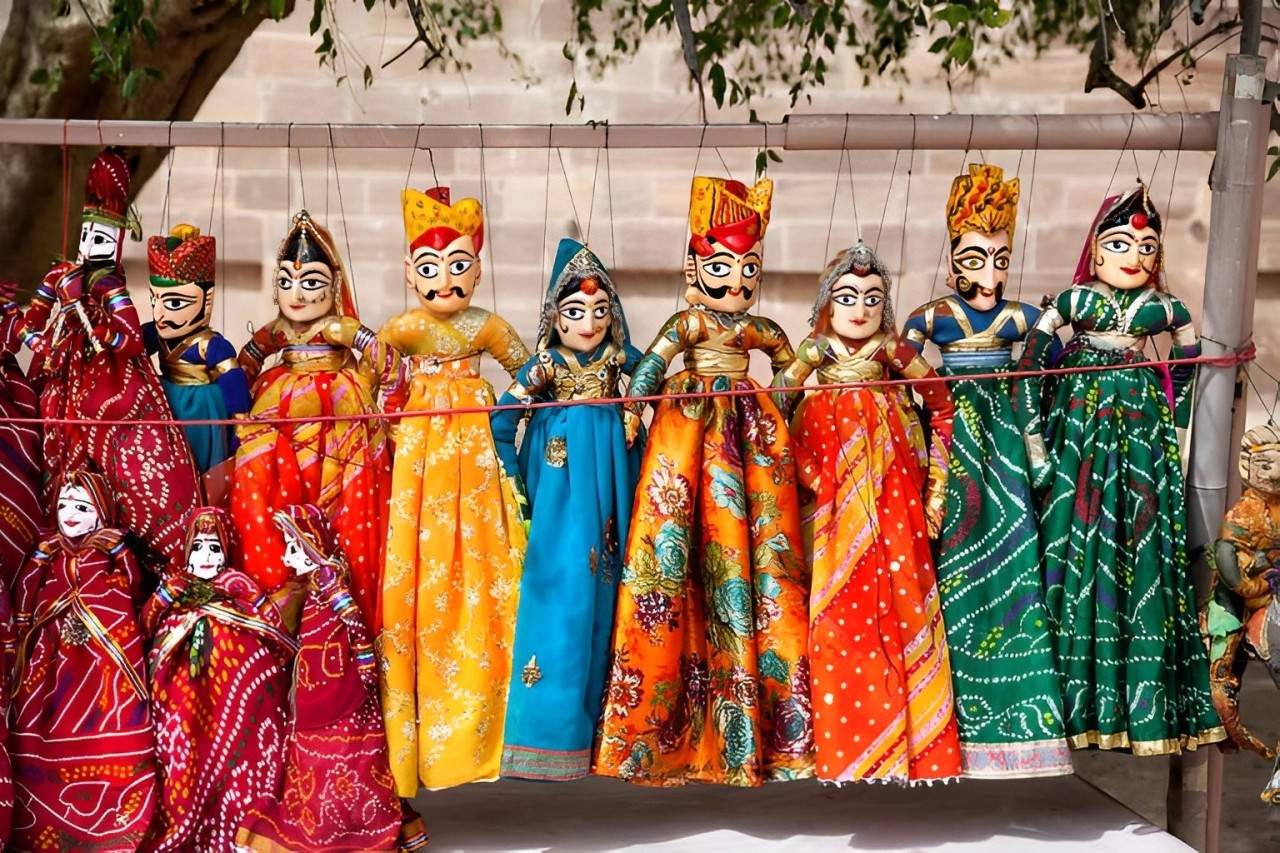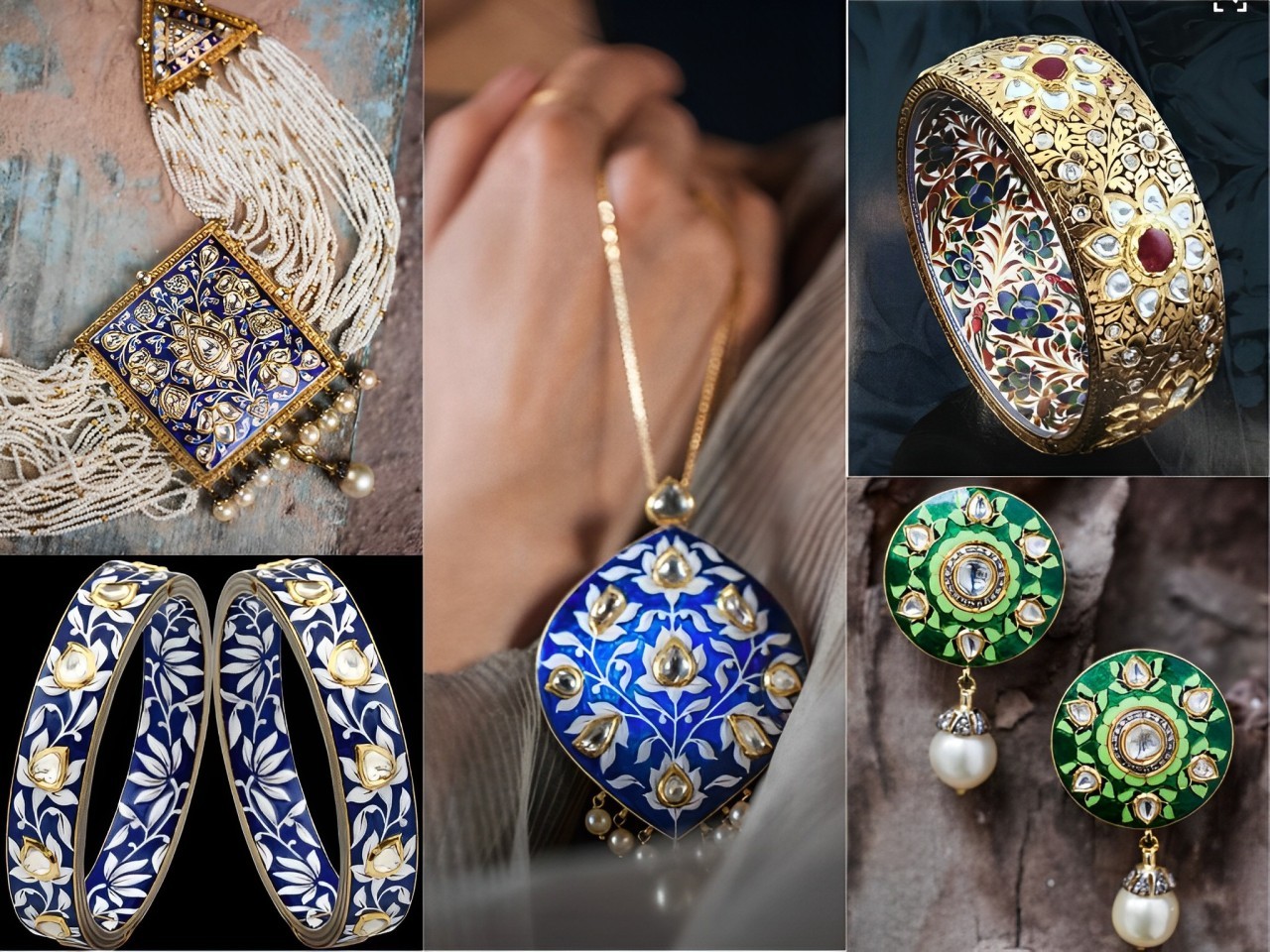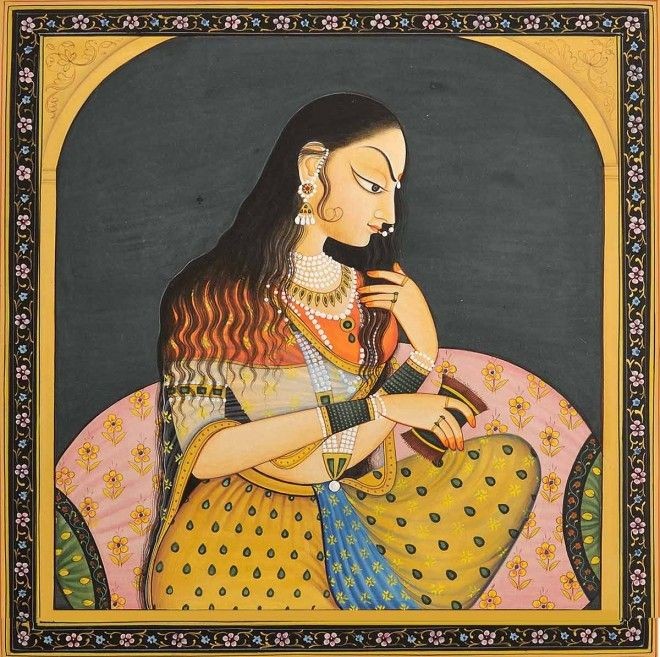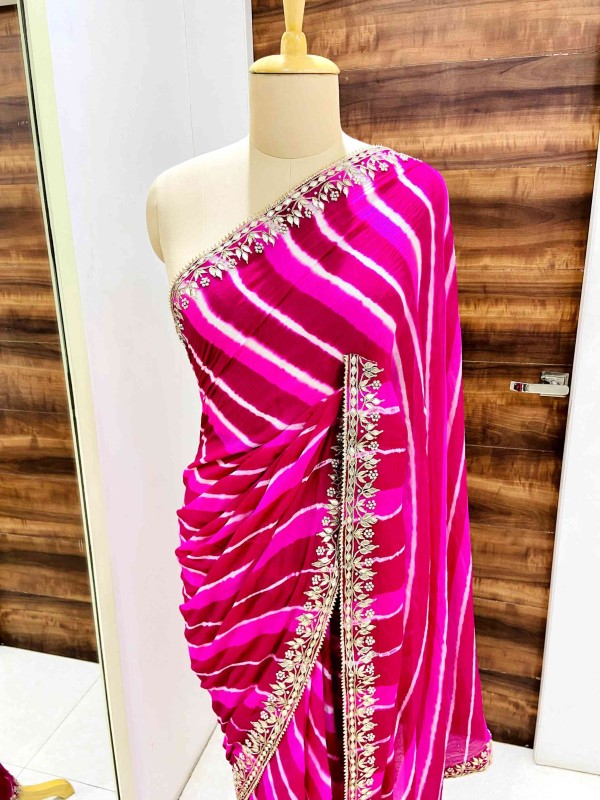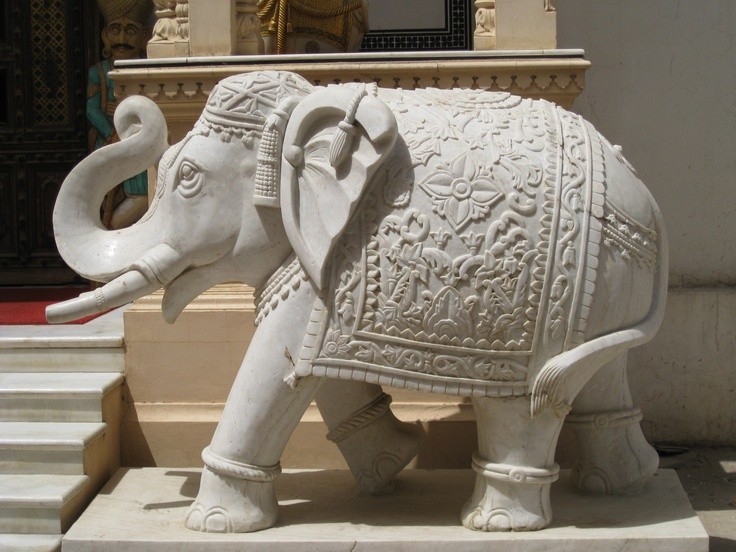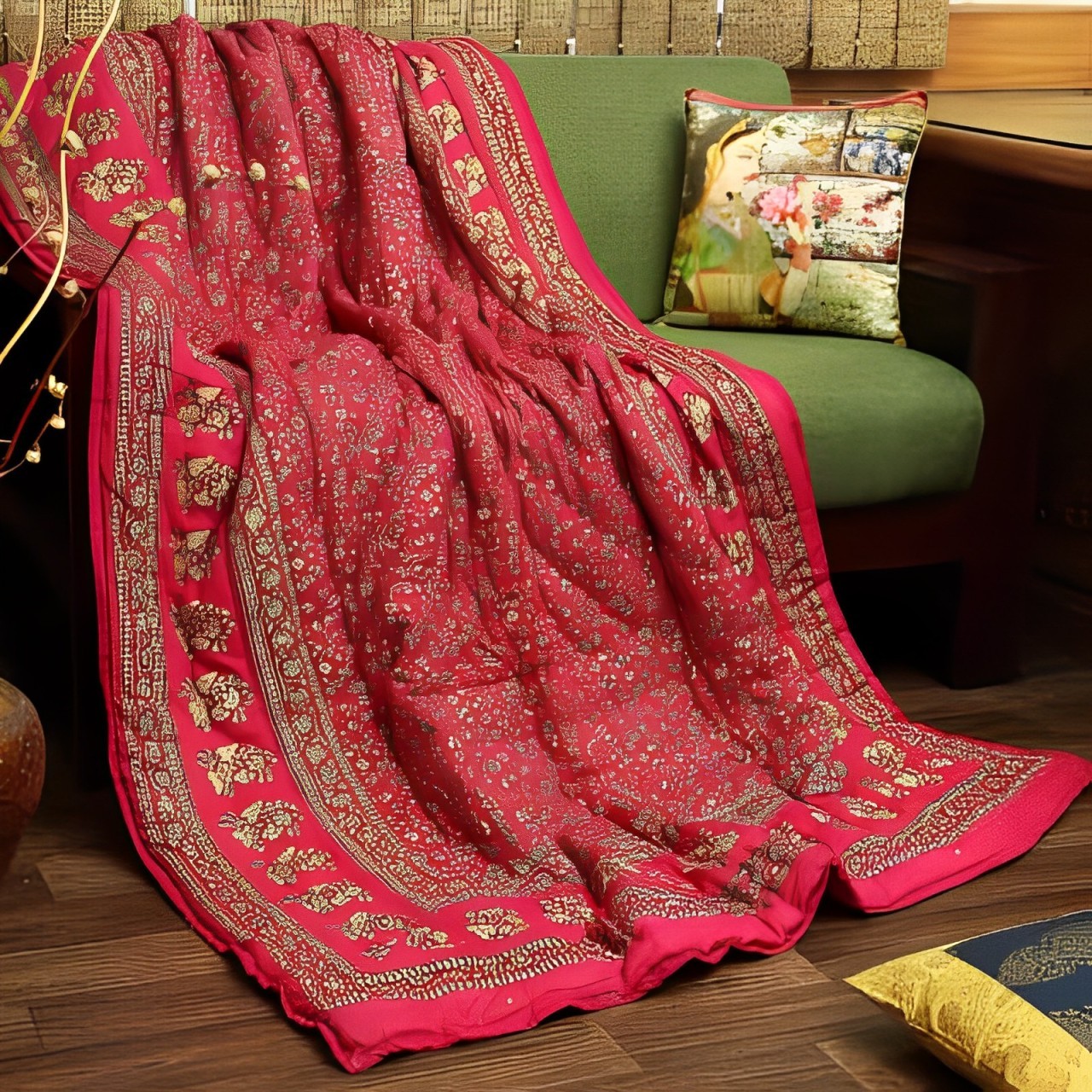Meenakari
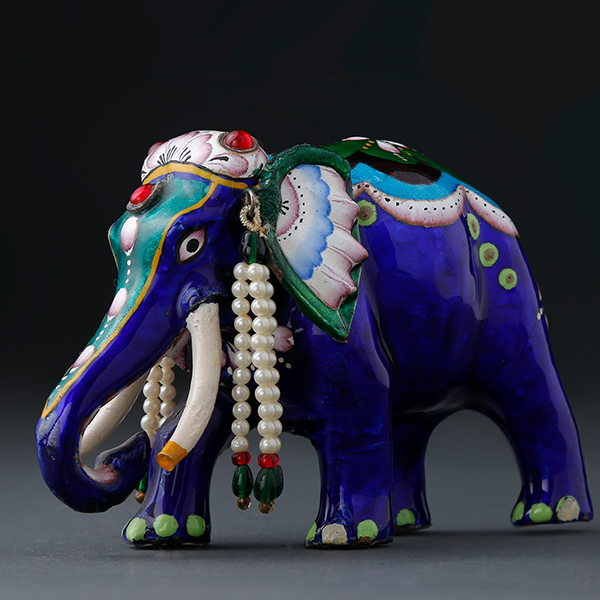
The art of Meenakari, or Meena Kari or Mina Kari is an art of painting or embellishing various types of metals with bright colours in dramatic motifs of birds, flowers and leaves. There are various kinds of Meenakari work depending on whether the enamel is to appear opaque, transparent or translucent. It originated in Safavid Iran. It is practiced as an art form and commercially produced mainly in Iran, India, Afghanistan, Pakistan. Minakari art usually is applied as a decorative feature to serving dishes, containers, vases, frames, display ornaments and jewellery.
Meenakari is primarily associated with the state of Rajasthan in India, where the craft has been passed down through generations of artisans. Jaipur is famous for its Meenakari jewellery, which is exported all over the world. Meenakari work is also popular in other parts of India, including Gujarat, Uttar Pradesh, and West Bengal.
Today, Meenakari is not just a traditional art form but also a thriving industry that employs thousands of artisans across India. The craft has also been recognized by the government of India, which has set up several institutions to promote and preserve this ancient art form.
Etymology
The word Meenakari is derived from Meena, which is the feminine form of Minoo in Persian, referring to heaven or paradise. Kari means to do or place something onto something else. Together the word Meenakari means to place paradise onto an object.
History
The art of enamelling metal for ornamental reasons has been traced back to the Parthian and Sassanid period of Iranian history. However, the meticulous ornamental work seen today can be traced back to Safavid Iran around the 15th century. The Moghuls introduced it into India and perfected the technique making the design applied on objects more intricate. The craft reached its peak in Iran during the eighteenth and nineteenth century. In the twentieth century Iranian artisans specializing in Meenakari were invited to other regions to assist with training local craftsmen. In India Rajasthan and Gujarat are most famous for their Meenakari artifacts and jewellery.
Initially, Meenakari was used to decorate the interiors of Mughal palaces, including walls, ceilings, and even thrones. Over time, it evolved into a decorative art form for jewellery, utensils, and other metal objects. Meenakari work involves intricate designs that are etched onto the metal surface, which is then filled with various colours of enamel.
Journey of Meenakari Art
Since ages, gold has been a preferred metal for meenakari art as it has the ability to hold the enamel in a better manner. Not only this, the usage of gold in meenakari works also enhances the luster of the art while bringing out the colours of the enamels beautifully. The usage of silver in meenakari work was introduced later which was mainly used for making bowls, boxes, spoons, and art pieces. Later on, copper was also introduced in meenakari art after the Gold Control Act which forced the meenakari of India to look for metals other than gold for creating meenakari jewellery and other art pieces.
In the initial stages, the works of meenakari couldn’t gain wide recognition as the technique was used as backing for the popular stone-studded jewellery and kundan jewellery. The most fascinating quality of this jewellery lies in its reversibility as it can be reversed and worn by the wearer to enjoy different patterns in the same piece of jewellery.
Metals Used
A wide variety of metals is used for Meenakari designing, including brass, copper, silver and gold. Enamel colours chiefly consist of metal oxides mixed with a tint of finely powdered glass. The colour yellow is obtained by using chromate of potash; violet is obtained through carbonate of manganese; green through copper oxide; blue through cobalt oxide; brown through red oxide; and black through a manganese, iron, and cobalt. Apart from using glass, the powder of various semi-precious and precious stones is also used in the colouring process. Meenakari is often used in addition to Kundan to create exquisite jewellery.
Colours used for Meenakari
The colours or the enamel that is used for filling up the design depressions on metal are not filled with any normal colours. Meenakari colours are essentially metal oxides infused with powdered glass. The true colour of the enamel comes out once the metal is heated (at 850 degrees Celsius). Artisans or meenakari often rub the designed metal with some tamarind or lime to enhance the colour of the enamel.
Types of Meenakari
There are broadly five types of meenakari.
- Ek rang khula Mina: This particular type of Meenakari involves the use of a single colour to cover the metal. The colour is usually transparent and has golden outlines.
- Panch Rang Mina: This involves the use of five coloured enamels to make colourful figurines or designs on the metal. The five colours that are used are white, light blue, dove, dark blue and green
- Gulabi Mina: This is a mixed style of meenakari but the dominant colour that is used as an enamel is pink which is derived from roses. This style of meenakari is very famous in Varanasi.
- Band Mina Khaka: In this form of enamelling, the metal is usually covered with a transparent colour and has opaque outlines instead of golden.
- Stone carving combined with enamelling: This is a highly preferred method of jewellery designing that combines stone carving with the beautiful art of enamelling. This method is widely used in designing beautiful Kundan jewellery.
The Making Process of Meenakari Craft
The process of creating Meenakari craft involves several steps that require skill, patience, and attention to detail. Here is a brief overview of the process:
- Preparation of the base metal: The first step in Meenakari is to prepare the base metal, which is usually copper or silver. The metal surface is cleaned thoroughly to remove any dirt, oil, or grease.
- Designing: The next step is to design the object or piece of craft that will be enamelled. The design is drawn onto the metal surface using a fine-tipped brush.
- Engraving: Once the design is in place, the metal is engraved using a small chisel or burin. The engraving creates small cavities or cells that will be filled with enamel.
- First Firing: After the engraving is complete, the metal is fired in a kiln to fuse the design with the surface of the metal.
- First Coating: The metal is then coated with a layer of white enamel, which serves as the base for the colours that will be added later.
- Second Firing: The metal is fired again in a kiln to set the white enamel.
- Applying colours: The enameller then applies the colours to the cells in the design using a brush. Each cell is filled with a different colour of enamel. The colours are allowed to dry completely before moving on to the next step.
- Polishing: Once the enamel has dried completely, the object is polished with a mixture of charcoal and oil to remove any rough edges or excess enamel.
- Final Firing: Finally, the object is fired in the kiln one last time to set the enamel and give it a glossy finish.
- Finishing: The final step is to add any additional embellishments, such as stones or beads, and to attach any necessary components, such as earring hooks or necklace chains.
Different Applications of Meenakari Art
Meenakari Paintings: Meenakari paintings have been amongst the oldest expressions of this art form. These paintings are popular because of their intricate designs and use of beautiful colours. Unlike conventional paintings, meenakari paintings are done on metal or ceramic. After the designing and enamel application, the paintings are heated to properly set the colour on the artwork.
Meenakari Jewellery: Meenakari jewellery is a rage amongst the brides and it is an essential part of a family’s heirloom too. By virtue of their precise designing and traditional appeal, this kind of jewellery is in a lot of trends these days. When combined with stone carving and Kundan work, the jewellery pieces become very awe inspiring. There are various pieces of meenakari jewellery like earrings, bangles, kadhas, necklaces etc.
Meenakari Artefacts: Many home decor items and artefacts are made using this art form. Exclusive lane has a unique collection of meenakari art products like the meenakari royal blue swan set handle, meenakari white swan hand enamelled set in metal and various other products.
Meenakari Furniture: There are various furniture items like beds, chairs etc. that are meenakari engraved. Such furniture items come at a premium price but they add a lot of charm and grace to the overall appeal of your home.
How to Maintain Meenakari Craft
Meenakari craft requires proper care and maintenance to preserve its beauty and durability. Here are some tips on how to maintain Meenakari craft:
- Avoid exposure to moisture: Meenakari is made of metal and enamel, which can be damaged by moisture. Therefore, avoid immersing Meenakari craft in water doing any activity that involves exposure to water.
- Store properly: Store Meenakari craft in a cool, dry place, away from direct sunlight. Use a soft cloth or pouch to protect it from scratches and tarnishing.
- Clean regularly: Meenakari craft can be cleaned using a soft, dry cloth to remove any dust or debris. For tougher stains or tarnishing, use a mild detergent solution and a soft brush to gently clean the surface. Avoid using harsh chemicals or abrasive materials that can damage the enamel.
- Handle with care: Meenakari is delicate and can be easily damaged if handled roughly. Avoid dropping or knocking Meenakari objects.
- Avoid exposure to chemicals: Meenakari can be damaged by exposure to chemicals such as perfumes, hairspray, and cleaning agents. Therefore, avoid spraying these substances directly onto Meenakari objects.
- Re-polish if necessary: Over time, Meenakari objects may lose its lustre and shine. Finely use natural polish to get the shine back.
By following these simple maintenance tips, you can ensure that your Meenakari craft remains beautiful and lasts for years to come.
Cultural Significance of Meenakari Craft
Meenakari craft has significant cultural and historical significance in India. It is not only a traditional art form but also a symbol of India's rich cultural heritage. Here are some ways in which Meenakari craft is culturally significant:
- Representation of Indian art: Meenakari craft reflects the intricate and colourful art forms that have been a part of Indian culture for centuries. The craft is a symbol of the artistic expression of the Indian people, and it has played a significant role in the country's cultural history.
- Symbolism of colours: Meenakari uses a range of vibrant colours, each of which has a symbolic meaning. For example, red symbolizes passion, blue represents tranquillity, and green symbolizes fertility. These colours are often used in religious and cultural ceremonies in India.
- Connection to religious ceremonies: Meenakari is closely associated with Hinduism and is often used in the creation of religious artefacts such as idols, puja thalis, and other religious objects. The craft is an integral part of Indian religious ceremonies and is considered a sacred art form.
- Significance in royal culture: Meenakari craft was highly valued by Indian kings and royalty, who used it to decorate their palaces, thrones, and other ceremonial objects. The craft was a symbol of wealth and prestige and was considered a mark of social status.
- Heritage and Tradition: Meenakari has been passed down from generation to generation, and its continued practice is a testament to India's rich cultural heritage. The craft is a symbol of India's artistic and cultural legacy and represents the country's commitment to preserving its traditions and customs.
In Summary:
Meenakari craft is a culturally significant art form that has played an important role in India's history and cultural heritage. Its vibrant colours, intricate designs, and symbolism continue to be valued and celebrated today.
Characteristics of Bridal Meenakari Art:
When it comes to bridal jewellery, meenakari art is hands down the most distinguished and highly preferred art form. The value in terms of the pricing of bridal meenakari art is anchored to the choice of metal that is used for enamelling. If gold is used as a base metal, then the pricing will surge. If silver or any other metal is used, the pricing will be relatively lesser. In addition to that, the choice of stones which are used to embellish the enamel design further also contributes to the cost and makes meenakari ornaments all the more exquisite.

